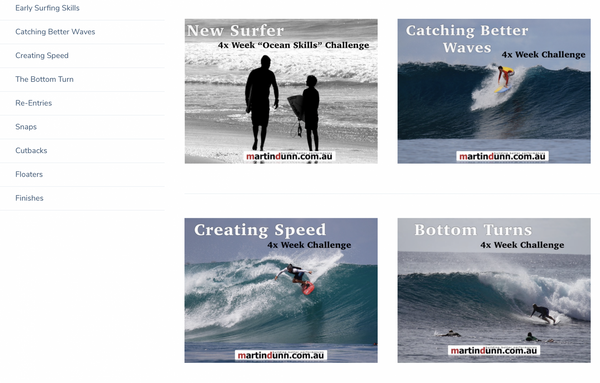Breaking Performance Barriers
Surfing should be fun.
There is no doubt that the fun of surfing is what attracts everyone initially, but also the challenges that the sport offers daily – whether 2 foot onshore surf or large powerful waves.
But what if surfing becomes frustrating? Where a surfer progresses well initially, but eventually the performance plateaus and the surfer finds it hard to advance to a newer, higher level of performance.
To overcome this issue – what has happened in the past is that surfers watch all the surf movies available, listen to better surfers explaining how they do it, or these same surfers provide advice or tips that the surfer takes away and tries to insert into their own performances. Generally this works well, but when trying to help surfers truly reach their potential, there are now more accurate ways to provide direction to break performance plateaus and more importantly, individualised to the surfer.
What I am saying is that experienced surf coaches and some online websites have the experience and understanding of the sport to provide a professional service to all who seek it.
The first task a coach has to do however to help surfers break these plateaus, is to precisely pinpoint where the performance breaks down, and this is followed closely by a determination of what needs to be worked upon, and at what level. For example a surfer might be consistently falling off at the end of their rides. But what is causing this inconsistency, as it could be a number of different issues.

4 Week Challenges – available to members on martindunn.com.au
The reality is that most errors in performance are caused by:
- a technical error
- a decision-making error
- or a psychological error.
Let me explain – a technique error is where a surfer moves his body incorrectly, either by not having all the movements necessary to perform a surfing manoeuvre. Or the movement pattern may be out of sequence. Both would cause the surfer to perform a manoeuvre that is less powerful, or one where the surfer “catches” a rail or losses their speed. Pinpoint the deficiency, and you are halfway there to rectifying the error.
A decision error, can be simply a surfer taking off too deep on a peak [ resulting in no quality first move ], or it may be their inability to distinguish between a cutback or snap section. Even though the surfer can perform a cutback and snap manoeuvre, performing the wrong manoeuvre in the wrong section, normally results in a surfer losing their speed or half manoeuvres are performed – both outcomes frowned upon by the judging panels around the world.
The third major error is the psychological error. This can be simply a fear of performing a manoeuvre [ because of past failures, or a real fear for their health and safety], or there might be attitudinal problems because of their frustrations with the inability to perform a manoeuvre, conditioned responses [ e.g. Always thinking negative thoughts ], or over-committing their surfing when there isn’t enough performance ability available. All areas are distinguishable, and all areas can be eliminated over time with the right diagnosis and effort from the surfer.
Once the correct diagnosis has been made, it isn’t simply recommending the training drills to fix the problem that breaks the plateau. It is also important to provide the surfer with the correct training considering what level the individual surfer is at. As “too-advanced” or “too simplistic” training can stall any developmental process. This key consideration, is often over-looked by many advisors, as there seems to be a thought that all development is the same. If you like, one size fits all. Sure, if a surfer is ready to learn a skill [because they are physically and psychologically ready] then they should be taught the skill. But if a surfer is not sufficiently skilled, because of their development , training should be modified to suit their needs.
The training drills, simulations, and “4 week challenges” provided on Martindunn.com.au have all been comprehensively tested with motivated surfers over a 30 year period. Surfers wanting to break their current performance barriers, and move into a higher category of surfing performance, should look no further online for effective training that works.
Try us out today through our 7 day free trial.
